.
SPAIN HAS ALWAYS BEEN AN EXCITING COUNTRY TO VISIT
. BECAUSE MY FLIGHT BACK TOTHE STATES WENT RIGHT OVER MADRID, I DECIDED, WHY NOT MAKE A PIT STOP AND SEE HOW MUCH IT HAS CHANGED SINCE I LAST VISITED MADRID BACK IN THE 70'S. MY PIT STOP WAS WAY TOO SHORT! I NEEDED AT LEAST A MONTH TO CHECK OUT MADRID. BUT THE PLAN HAD ALREADY BEEN MADE A MONTH PRIOR. I FLEW IBERIA AIRLINES, WHICH TOOK ABOUT TWO HOURS. . ONCE I ARRIVED AT THE MADRID BARAJAS AIRPORT, I TOOK THE SUBWAY TO MY HOTEL. OF COURSE, I PRE-ARRAINGED ALL THE DETAILS, I.E. HOTEL, ETC., A MONTH AGO. I BOUGHT A 10 PASS SUBWAY TICKET FOR $15 EUROS AND HEADED THREE STATIONS TO MY DESTINATION: CAMPO DE LAS NACIONES STATION. THAT WAS ABOUT A 35 MINUTE RIDE. AT THE STATION, ALL I HAD TO DO WAS EXIT THE SUBWAY AND THE PULLMAN HOTEL WAS JUST A BLOCK AWAY. NOTHING TO IT. I REGISTERED AT THE HOTEL AND WENT TO MY ROOM ON THE SECOND FLOOR: 210. HOME FOR THE NEXT THREE DAYS..MADRID IS A HIGHLY COMOSPOLITAN CITY. BUT ONE HAS TO BE CAREFUL ABOUT SPANISH CUSTOMS. I GOT UP EARLY THE FOLLOWING DAY AND WENT OUT TO LOOK FOR A RESTAURANT AT 6:00 AM. I MUST HAVE WALKED BY SIX CLOSED RESTAURANTS. I FORGOT THAT MOST BUSINESS DO NOT OPEN UNTIL 9:30 AM OR LATER. THE OTHER CUSTOM I HAD TO REMEMBER WAS THAT ALL SPANIARDS TAKE A SIESTA FROM 2:00 PM TO 5:00 PM. GUESS WHAT? NO FOOD!!! ANYWAY, IT WAS A GOOD THING I SAW A FILLING STATION CLOSE BY THAT EARLY MORNING. I WAS IN LUCK, THEY HAD A MINI GROCERY STORE WITH A CAFETERIA. NELLY KNOWS ME WHEN I AM HUNGRY! WHEN I AM STARVING, I HAVE TO EAT SOMETHING RIGHT AWAY
. I HAD NOT HAD A BITE SINCE I LEFT ITALY THE DAY BEFORE. SO I ORDERED MYSELF A LARGE BREAKFAST. WHAT I COULD NOT EAT, I SAVED AND TOOK ALONG IN A DOGGIE BAG. YES, THEY HAVE DOGGIE BAGS IN MADRID. BACK TO MY HOTEL ROOM I WENT. AROUND 8:00 AM I WAS READY TO HEAD TO MY NEXT DESTINATION: THE HOP ON- HOP OFF TOUR BUS. .Again, it was an easy walk to the subway, one block from my hotel. 35 minutes later I was at the MINISTERIOS station. The Hop-On Hop-Off bus stop was just across the street from the subway. But to my dismay, there was a notice on the bus schedule: "Due to the May 1 celebrations", the Hop-ON Hop-Off bus would not be operating until 3 PM. The tour route would be full of not only celebrants, but protestors. What to do? Back I went to my hotel. Next to my hotel is the enormous Juan Carlos I park, in honor of the King of Spain. It occupies over 400 acres and has a lake of over 7 and half acres, a river the length of 27 football fields, over 8 miles of walks, 52 acres of olive groves, 19 outdoor modern sculptures, a garden called the Three Cultures ("Tres Culturas"), and an auditorium
. I spent my entire day here, as you can see from my pictures.
.
On my last day in Madrid, I made it a point of getting on that Hop-On Hop-Off. Again I was off to the MINISTERIOS station. No problem this time. The bus arrived on time. I paid my $21 for the day ticket, climbed to the second deck and let the scenery go by. Well, just check out my pictures. There were so many places I could have stopped for a visit. No hopping off on any historical place. Instead I took the full tour and called it a day.
Back to my hotel I went. I packed and the following morning made my way back to the airport. My American Airlines flight number 1075 was due to leave at 11:15 AM. The flight to Dallas took ten hours. A three hour layover in Dallas and I was on my way to El Paso, my final flight stop. My sister was gracious enough to meet me at the ELP airport. After an hour's drive, it was Home Sweet Home finally by 11:00 PM, but I was wide awake! Darn that jetlag!!! Oh well, that is all part of traveling around the world!!! So ended my 37 day trip
. Nelly is still out there somewhere in Switzerland. She has 30 days more to go and will be home the end of May. Oh, the jetlag she will have to endure! Her flight goes through Los Angles. She will be reporting next on her Swiss trip. So stay tuned!!!!
^^^^^^^^^^^^^^^^^^^^^^^^^^^^^^^^^^^^^^^^^^^^^^^
....Here is more detailed info on MADRID:
Madrid (/məˈdrɪd/, Spanish: [maˈðɾið], locally: [maˈðɾi(θ)]) is the capital city of Spain and the largest municipality in both the Community of Madrid and the Kingdom of Spain. The city has a population of almost 3.2 million[4] with a metropolitan area population of approximately 6.5 million. It is the third-largest city in the European Union, after London and Berlin, and its metropolitan area is the third-largest in the European Union after those of London and Paris.[5][6][7][8] The municipality itself covers an area of 604.3 km2 (233.3 sq mi).[9] Madrid lies on the River Manzanares in the centre of both the country and the Community of Madrid (which comprises the city of Madrid, its conurbation and extended suburbs and villages); this community is bordered by the autonomous communities of Castile and León and Castile-La Mancha
. As the capital city of Spain, seat of government, and residence of the Spanish monarch, Madrid is also the political, economic and cultural centre of Spain.[10] The current mayor is Manuela Carmena from Ahora Madrid.
The Madrid urban agglomeration has the third-largest GDP[11] in the European Union and its influences in politics, education, entertainment, environment, media, fashion, science, culture, and the arts all contribute to its status as one of the world's major global cities.[12][13] Madrid is home to two world-famous football clubs, Real Madrid and Atlético de Madrid. Due to its economic output, high standard of living, and market size, Madrid is considered the major financial centre of Southern Europe[14][15] and the Iberian Peninsula; it hosts the head offices of the vast majority of major Spanish companies, such as Telefónica, Iberia, and Repsol. Madrid is the 17th most liveable city in the world according to Monocle magazine, in its 2014 index.[16][17]
Madrid houses the headquarters of the World Tourism Organization (UNWTO), belonging to the United Nations Organization (UN), the Ibero-American General Secretariat (SEGIB), the Organization of Ibero-American States (OEI), and the Public Interest Oversight Board (PIOB)
. It also hosts major international regulators and promoters of the Spanish language: the Standing Committee of the Association of Spanish Language Academies, headquarters of the Royal Spanish Academy (RAE), the Cervantes Institute and the Foundation of Urgent Spanish (Fundéu BBVA). Madrid organises fairs such as FITUR,[18] ARCO,[19] SIMO TCI[20] and the Cibeles Madrid Fashion Week.[21]
While Madrid possesses modern infrastructure, it has preserved the look and feel of many of its historic neighbourhoods and streets. Its landmarks include the Royal Palace of Madrid; the Royal Theatre with its restored 1850 Opera House; the Buen Retiro Park, founded in 1631; the 19th-century National Library building (founded in 1712) containing some of Spain's historical archives; a large number of national museums,[22] and the Golden Triangle of Art, located along the Paseo del Prado and comprising three art museums: Prado Museum, the Reina Sofía Museum, a museum of modern art, and the Thyssen-Bornemisza Museum, which completes the shortcomings of the other two museums
.[23] Cibeles Palace and FoThe first documented reference of the city originates in Andalusan times as the Arabic مجريط Majrīṭ (AFI [maʤriːtˁ]), which was retained in Medieval Spanish as Magerit ([maʤeˈɾit]). A wider number of theories have been formulated on possible earlier origins.
According to legend, Madrid was founded by Ocno Bianor (son of King Tyrrhenius of Tuscany and Mantua) and was named "Metragirta" or "Mantua Carpetana". Others contend that the original name of the city was "Ursaria" ("land of bears" in Latin), because of the many bears that were to be found in the nearby forests, which, together with the strawberry tree (Spanish madroño), have been the emblem of the city since the Middle Ages.[26]
The most ancient recorded name of the city "Magerit" (for *Materit or *Mageterit?) comes from the name of a fortress built on the Manzanares River in the 9th century AD, and means "Place of abundant water".[27] If the form is correct, it could be a Celtic place-name from ritu- 'ford' (Old Welsh rit, Welsh rhyd, Old Breton rit, Old Northern French roy) and a first element, that is not clearly identified *mageto derivation of magos 'field, plain' (Old Irish mag 'field', Breton ma 'place'), or matu 'bear', that could explain the Latin translation Ursalia
.[28]
Nevertheless, it is also speculated that the origin of the current name of the city comes from the 2nd century BC. The Roman Empire established a settlement on the banks of the Manzanares river. The name of this first village was "Matrice" (a reference to the river that crossed the settlement). Following the invasions carried out by the Germanic Sueves and Vandals, as well as the Sarmatic Alans during the 5th century AD, the Roman Empire no longer had the military presence required to defend its territories on the Iberian Peninsula, and as a consequence, these territories were soon occupied by the Vandals, who were in turn dispelled by the Visigoths, who then ruled Hispania in the name of the Roman emperor, also taking control of "Matrice". In the 8th century, the Islamic conquest of the Iberian Peninsula saw the name changed to "Mayrit", from the Arabic term ميرا Mayra[citation needed] (referencing water as a 'tree' or 'giver of life') and the Ibero-Roman suffix it that means 'place'
. The modern "Madrid" evolved from the Mozarabic "Matrit", which is still in the Madrilenian gentilic.[29]
Although the site of modern-day Madrid has been occupied since prehistoric times,[30][31][32] and there are archaeological remains of Carpetani settlement,[30] Roman villas,[33] a Visigoth basilica near the church of Santa María de la Almudena[26][34] and three Visigoth necropoleis near Casa de Campo, Tetúan and Vicálvaro,[35] the first historical document about the existence of an established settlement in Madrid dates from the Muslim age. At the second half of the 9th century,[36] Emir Muhammad I of Córdoba built a fortress on a headland near the river Manzanares,[37] as one of the many fortresses he ordered to be built on the border between Al-Andalus and the kingdoms of León and Castile, with the objective of protecting Toledo from the Christian invasions and also as a starting point for Muslim offensives
. After the disintegration of the Caliphate of Córdoba, Madrid was integrated in the Taifa of Toledo. With the surrender of Toledo to Alfonso VI of León and Castile, the city was conquered by Christians in 1085, and it was integrated into the kingdom of Castile as a property of the Crown.[38] Christians replaced Muslims in the occupation of the centre of the city, while Muslims and Jews settled in the suburbs. The city was thriving and was given the title of Villa, whose administrative district extended from the Jarama in the east to the river Guadarrama in the west. The government of the town was vested to the neighbouring of Madrid since 1346, when king Alfonso XI of Castile implements the regiment, for which only the local oligarchy was taking sides in city decisions.[39] Since 1188, Madrid won the right to be a city with representation in the courts of Castile. In 1202, King Alfonso VIII of Castile gave Madrid its first charter to regulate the municipal council,[40] which was expanded in 1222 by Ferdinand III of Castile.
In 1309, the Courts of Castile were joined in Madrid for the first time under Ferdinand IV of Castile, and later in 1329, 1339, 1391, 1393, 1419 and twice in 1435
. Since the unification of the kingdoms of Spain under a common Crown, the Courts were convened in Madrid more often.
Modern Age[edit]
During the revolt of the Comuneros, led by Juan de Padilla, Madrid joined the revolt against Emperor Charles V of Germany and I of Spain, but after defeat at the Battle of Villalar, Madrid was besieged and occupied by the royal troops. However, Charles I was generous to the town and gave it the titles of Coronada (Crowned) and Imperial. When Francis I of France was captured at the battle of Pavia, he was imprisoned in Madrid. And in the village is dated the Treaty of Madrid of 1526 (later denounced by the French) that resolved their situation.[41]
View of Madrid from the west, facing the Puerta de la Vega (1562), by Anton van den Wyngaerde (called in Spain Antonio de las Viñas), commissioned by Philip II to collect views of his cities. Is seen in the foreground the banks of the Manzana, crossed by the predecessors to the Segovia Bridge (in the first third), and the Toledo Bridge (further south, right), which was built in a monumental form years later
. The most prominent building in the north (left) is the Alcázar, which was part of the walled circuit and which would undergo several fires until the fatal one in 1734 that almost completely destroyed it and was replaced by the current Palacio Real. The following churches are seen in the village (from left to right: San Gil, San Juan, Santiago, San Salvador, Iglesia de San Miguel de los Octoes, San Nicolás, Santa María, San Justo, San Pedro, Capilla del Obispo, San Andrés and, outside the walls, San Francisco), that do not yet have even the profile of domes and chapiters by which they would be characterised in the following centuries. Outside the walls and on the river, there is a craft facility dedicated to the treatment of hides: the Pozacho Tanneries. The recent installation of the court imposed a regalía de aposento tax on private houses, which produced all kinds of resistance including, most notably, the construction of Casas a la malicia.[42]
Plaza Mayor
The number of urban inhabitants grew from 4,060 in the year 1530 to 37,500 in the year 1594
. The poor population of the court was composed of ex-soldiers, foreigners, rogues and Ruanes, dissatisfied with the lack of food and high prices. In June 1561, when the town had 30,000 inhabitants, Philip II of Spain moved his court from Valladolid to Madrid, installing it in the old castle.[43] Thanks to this, the city of Madrid became the political centre of the monarchy, being the capital of Spain except for a short period between 1601 and 1606 (Philip III of Spain's government), in which the Court returned to Valladolid. This fact was decisive for the evolution of the city and influenced its fate.
During the reign of Philip III and Philip IV of Spain, Madrid saw a period of exceptional cultural brilliance, with the presence of geniuses such as Miguel de Cervantes, Diego Velázquez, Francisco de Quevedo and Lope de Vega.[44]
Puerta de Alcalá
The death of Charles II of Spain resulted in the War of the Spanish succession
. The city supported the claim of Philip of Anjou as Philip V. While the city was occupied in 1706 by a Portuguese army, who proclaimed king the Archduke Charles of Austria under the name of Charles III, and again in 1710, remained loyal to Philip V.
Philip V built the Royal Palace, the Royal Tapestry Factory and the main Royal Academies.[45] But the most important Bourbon was King Charles III of Spain, who was known as "the best mayor of Madrid". Charles III took upon himself the feat of transforming Madrid into a capital worthy of this category. He ordered the construction of sewers, street lighting, cemeteries outside the city, and many monuments (Puerta de Alcalá, Cibeles Fountain), and cultural institutions (El Prado Museum, Royal Botanic Gardens, Royal Observatory, etc.). Despite being known as one of the greatest benefactors of Madrid, his beginnings were not entirely peaceful, as in 1766 he had to overcome the Esquilache Riots, a traditionalist revolt instigated by the nobility and clergy against his reformist intentions, demanding the repeal of the clothing decree ordering the shortening of the layers and the prohibition of the use of hats that hide the face, with the aim of reducing crime in the city
.[46]
The reign of Charles IV of Spain is not very meaningful to Madrid, except for the presence of Goya in the Court, who portrayed the popular and courtly life of the city.
From the 19th century to present day[edit]
Alcalá street
On 27 October 1807, Charles IV and Napoleon I signed the Treaty of Fontainebleau, which allowed the passage of French troops through Spanish territory to join the Spanish troops and invade Portugal, which had refused to obey the order of international blockade against England. As this was happening, there was the Mutiny of Aranjuez (17 March 1808), by which the crown prince, Ferdinand VII, replaced his father as king. However, when Ferdinand VII returned to Madrid, the city was already occupied by Joachim-Napoléon Murat, so that both the king and his father were virtually prisoners of the French army. Napoleon, taking advantage of the weakness of the Spanish Bourbons, forced both, first the father then the son, to join him in Bayonne, where Ferdinand arrived on 20 April
.
In the absence of the two kings, the situation became more and more tense in the capital. On 2 May, a crowd began to gather at the Royal Palace. The crowd saw the French soldiers pulled out of the palace to the royal family members who were still in the palace. Immediately, the crowd launched an assault on the floats. The fight lasted hours and spread throughout Madrid. Subsequent repression was brutal. In the Paseo del Prado and in the fields of La Moncloa hundreds of patriots were shot due to Murat's order against "Spanish all carrying arms". Paintings such as The Third of May 1808 by Goya reflect the repression that ended the popular uprising on 2 May.[47]
The Peninsular War against Napoleon, despite the last absolutist claims during the reign of Ferdinand VII, gave birth to a new country with a liberal and bourgeois character, open to influences coming from the rest of Europe. Madrid, the capital of Spain, experienced like no other city the changes caused by this opening and filled with theatres, cafés and newspapers
. Madrid was frequently altered by revolutionary outbreaks and pronouncements, such as Vicálvaro 1854, led by General Leopoldo O'Donnell and initiating the progressive biennium. However, in the early 20th century Madrid looked more like a small town than a modern city. During the first third of the 20th century the population nearly doubled, reaching more than 950,000 inhabitants. New suburbs such as Las Ventas, Tetuán and El Carmen became the homes of the influx of workers, while Ensanche became a middle-class neighbourhood of Madrid.[48]
Cuatro Torres Business Area
Skyline
The Spanish Constitution of 1931 was the first legislated on the state capital, setting it explicitly in Madrid.
Madrid was one of the most heavily affected cities of Spain in the Civil War (1936–1939). The city was a stronghold of the Republicans from July 1936. Its western suburbs were the scene of an all-out battle in November 1936 and it was during the Civil War that Madrid became the first European city to be bombed by aeroplanes (Japan was the first to bomb civilians in world history, at Shanghai in 1932) specifically targeting civilians in the history of warfare
. (See Siege of Madrid (1936–39)).[49]
During the economic boom in Spain from 1959 to 1973, the city experienced unprecedented, extraordinary development in terms of population and wealth, becoming the largest GDP city in Spain, and ranking third in Western Europe. The municipality was extended, annexing neighbouring council districts, to achieve the present extension of 607 km2 (234.36 sq mi). The south of Madrid became very industrialised, and there were massive migrations from rural areas of Spain into the city. Madrid's newly built north-western districts became the home of the new thriving middle class that appeared as result of the 1960s Spanish economic boom, while the south-eastern periphery became an extensive working-class settlement, which was the base for an active cultural and political reform.[49]
After the death of Franco and the start of the democratic regime, the 1978 constitution confirmed Madrid as the capital of Spain
. In 1979, the first municipal elections brought Madrid's first democratically elected mayor since the Second Republic. Madrid was the scene of some of the most important events of the time, such as the mass demonstrations of support for democracy after the foiled coup, 23-F, on 23 February 1981. The first democratic mayors belonged to the leftist parties (Enrique Tierno Galván, Juan Barranco Gallardo), turning the city after more conservative positions (Agustín Rodríguez Sahagún, José María Álvarez del Manzano, Alberto Ruiz-Gallardón and Ana Botella). Benefiting from increasing prosperity in the 1980s and 1990s, the capital city of Spain has consolidated its position as an important economic, cultural, industrial, educational, and technological centre on the European continent.[49]
Madrid seen from Buenavista Hill
Geography[edit]
Climate[edit]
Main article: Climate of Madrid
The Madrid region has an inland Mediterranean climate (Köppen Csa)[50] bordering on a semi-arid climate (BSk),[51] with cool winters due to its altitude of 667 m (2,188 ft) above sea level, including sporadic snowfalls and minimum temperatures sometimes below freezing
. Summers are hot, in the warmest month – July -average temperatures during the day ranging from 32 to 33 °C (90 to 91 °F) depending on location, with maximums commonly climbing over 35 °C (95 °F) during heat waves. Due to Madrid's altitude and dry climate, diurnal ranges are often significant during the summer. The highest recorded temperature was on 24 July 1995 with 42.2 °C (108.0 °F), and the lowest recorded temperature was on 16 January 1945 with −10.1 °C (13.8 °F). Although these records were registered at the airport, not at the city.[52] Precipitation is concentrated in the autumn and spring, and, together with Athens which has similar annual precipitation, is the driest capital in Europe. It is particularly sparse during the summer, taking the form of about two showers and/or thunderstorms a month.untain have become one of the monument symbols of the city.[24][25]
Sovereign State Spain Spain
Autonomous
community Community of Madrid
Comarcas Metropolitan Area and Corredor del Henares
Founded 9th century[1]
Government
• Body Ayuntamiento de Madrid
• Mayor Manuela Carmena (Ahora Madrid)
Area
• Municipality 604
.3 km2 (233.3 sq mi)
Elevation 667 m (2,188 ft)
Population (2015[4])
• Municipality 3,141,991
• Rank 1st
• Density 5,390/km2 (14,000/sq mi)
• Urban 6,240,000 (2,016)[3]
• Metro 6,529,700 (2,014)[2]
Demonym(s) Madridian, Madrilenian, Madrilene, Cat
madrileño, -ña; matritense; gato (es)
MADRID, SPAIN
Sunday, April 30, 2017
 Madrid, Madrid, Spain and Canary Islands
Madrid, Madrid, Spain and Canary Islands
Other Entries
-
4NASSAU, BAHAMAS
Mar 2932 days prior Nassau, Bahamasphoto_camera56videocam 0comment 3
Nassau, Bahamasphoto_camera56videocam 0comment 3 -
5GREAT STIRRIP CAY, BAHAMAS
Mar 3031 days prior GREAT STURRIP CAY, Bahamasphoto_camera52videocam 1comment 1
GREAT STURRIP CAY, Bahamasphoto_camera52videocam 1comment 1 -
6MIAMI, FLORIDA
Mar 3130 days prior Miami, United Statesphoto_camera1videocam 0comment 0
Miami, United Statesphoto_camera1videocam 0comment 0 -
7FORT LAUDERDALE, FLORIDA
Apr 0129 days prior Ft Lauderdale, United Statesphoto_camera23videocam 0comment 2
Ft Lauderdale, United Statesphoto_camera23videocam 0comment 2 -
8PONTA DELGADA, PORTUGAL
Apr 0921 days prior Ponta delgada, Portugalphoto_camera26videocam 0comment 5
Ponta delgada, Portugalphoto_camera26videocam 0comment 5 -
9MALAGA, SPAIN
Apr 1218 days prior Málaga, Spain and Canary Islandsphoto_camera35videocam 0comment 3
Málaga, Spain and Canary Islandsphoto_camera35videocam 0comment 3 -
10ALICANTE, SPAIN
Apr 1317 days prior Alicante, Spain and Canary Islandsphoto_camera35videocam 0comment 3
Alicante, Spain and Canary Islandsphoto_camera35videocam 0comment 3 -
11CIVITAVECCHIA, ITALY
Apr 1515 days prior Civitavecchia, Italyphoto_camera34videocam 0comment 1
Civitavecchia, Italyphoto_camera34videocam 0comment 1 -
12DUBROVNIK, CROATIA
Apr 1812 days prior Dubrovnik, Croatiaphoto_camera45videocam 0comment 1
Dubrovnik, Croatiaphoto_camera45videocam 0comment 1 -
13KOTOR, MONTENEGRO
Apr 1911 days prior Kotor, Montenegrophoto_camera110videocam 0comment 3
Kotor, Montenegrophoto_camera110videocam 0comment 3 -
14KERKIRA (CORFU), GREECE
Apr 2010 days prior Kerkira, Greecephoto_camera33videocam 0comment 1
Kerkira, Greecephoto_camera33videocam 0comment 1 -
15KATAKOLON, GREECE
Apr 219 days prior Katakolo, Greecephoto_camera60videocam 0comment 3
Katakolo, Greecephoto_camera60videocam 0comment 3 -
16PIRAEUS (ATHENS), GREECE
Apr 228 days prior Piraeus, Greecephoto_camera24videocam 0comment 2
Piraeus, Greecephoto_camera24videocam 0comment 2 -
17NAFPLION, GREECE
Apr 246 days prior Nafplion, Greecephoto_camera88videocam 0comment 2
Nafplion, Greecephoto_camera88videocam 0comment 2 -
18MYKONOS, GREECE
Apr 255 days prior Mykonos, Greecephoto_camera98videocam 0comment 8
Mykonos, Greecephoto_camera98videocam 0comment 8 -
19RHODES, GREECE
Apr 264 days prior Rhodes, Greecephoto_camera74videocam 0comment 2
Rhodes, Greecephoto_camera74videocam 0comment 2 -
20SANTORINI, GREECE
Apr 273 days prior Santorini, Greecephoto_camera94videocam 0comment 2
Santorini, Greecephoto_camera94videocam 0comment 2 -
21NAPLES, ITALY
Apr 291 day prior Naples, Italyphoto_camera58videocam 0comment 4
Naples, Italyphoto_camera58videocam 0comment 4 -
22CIVITAVECCHIA, ITALY
Apr 30earlier that day Civitavecchia, Italyphoto_camera5videocam 0comment 4
Civitavecchia, Italyphoto_camera5videocam 0comment 4 -
23MADRID, SPAIN
Apr 30 Madrid, Spain and Canary Islandsphoto_camera102videocam 0comment 11
Madrid, Spain and Canary Islandsphoto_camera102videocam 0comment 11
Comments
2025-05-22
Comment code: Ask author if the code is blank

 Madrid, Madrid, Spain and Canary Islands
Madrid, Madrid, Spain and Canary Islands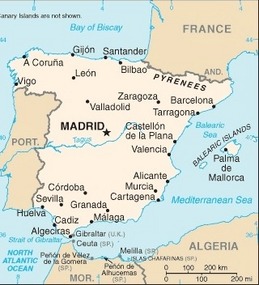
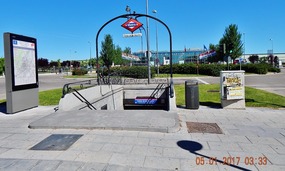
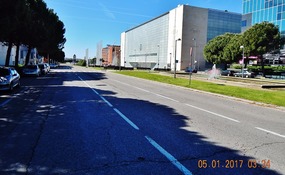
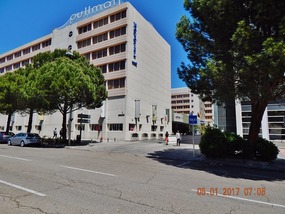
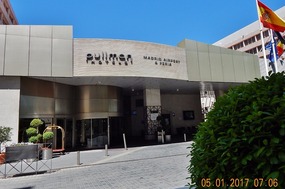
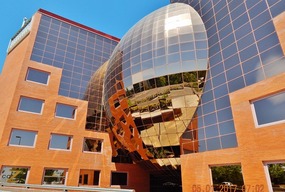
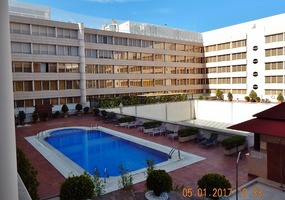
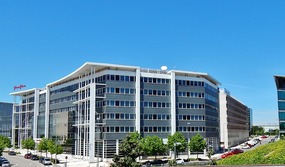
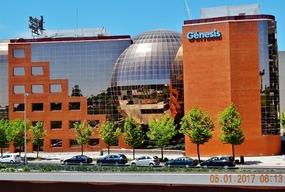
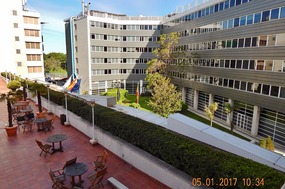
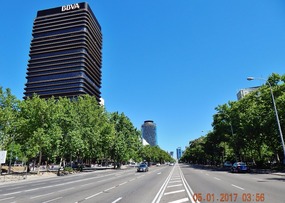
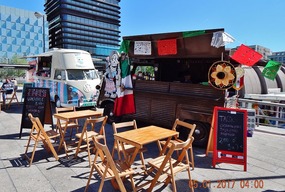
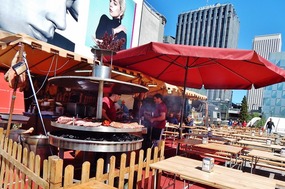
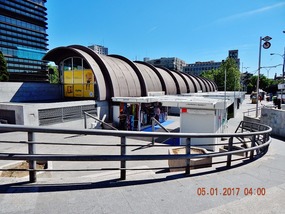
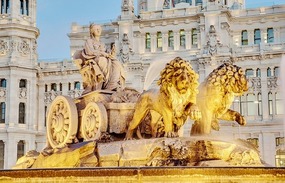
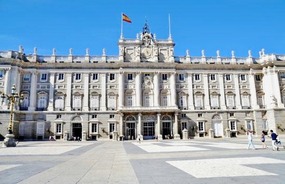

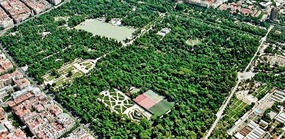
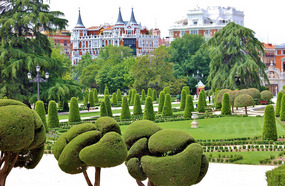
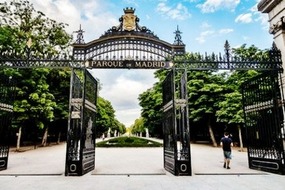









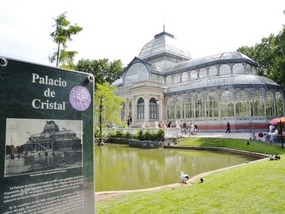
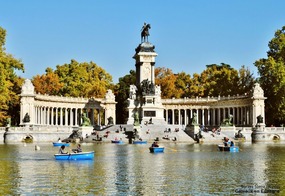

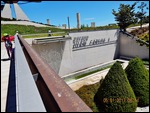


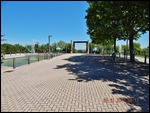
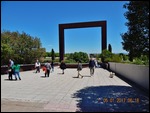
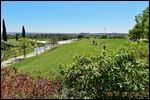
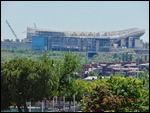
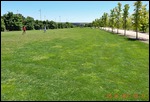

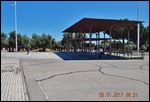
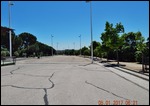













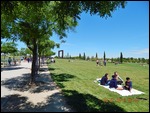

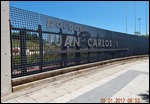



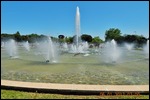
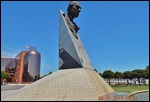
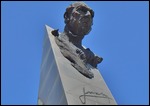
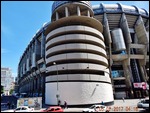




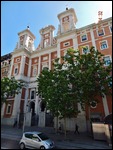
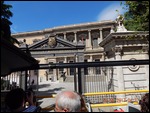
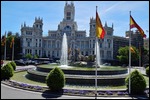


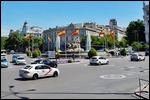

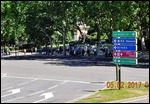



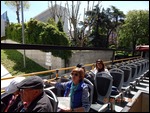

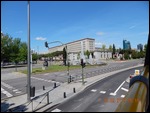
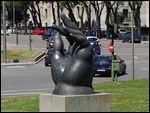
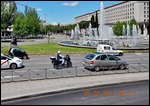
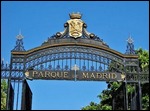
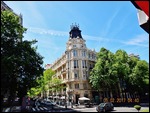
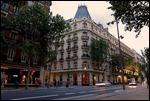
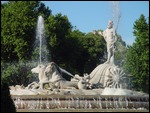
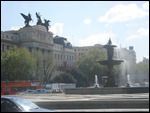

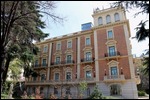
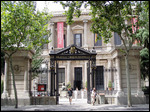



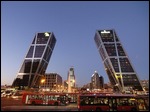

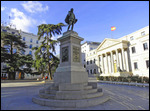
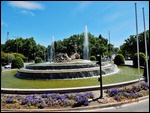
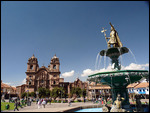
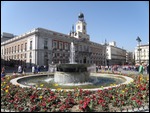
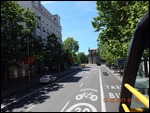
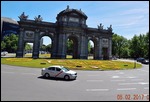
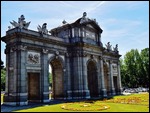
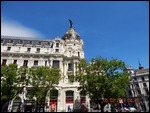

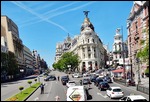
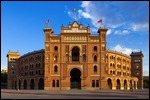
petkatravels
2017-05-12
Yes, Spain, what a country! So pleased all has gone so smoothly. Until next time relax looking at those magnificent Organ Mountains-and Nelly, enjoy the Swiss mountains and wonderful family and friends.xx
Ernst Rahm-Landis
2017-05-13
Dear Jim, thank you for your most impressing final report about Madrid, Spains Capitale of some 3.2 millions inhabitants; magnificent pictures, all showing the chocolate-side for tourists and businessmen. We may not put away the backside of the medal - a tremendous rate of unemployed people of 15.2 % - n o t your and not m y problem, thanks Heaven! Cheers, Ernst. - Have a good time back home in Las Cruses, and keep care of yourself! Guess you soon plan another trip all over the Globe. That's a big part of the pleasure in advance and gives much stuff for new dreams and adventures. - "And I said to myself: it's a wonderful world..." (Louis Armstrong). I fully agree with this statement, living - like you - on the sunny side of life!
smstevemoeller1
2017-05-13
You are the most accomplished traveler I have met. Your travelog is so full of details one could use it to easily get around the places you have visited. Thanks for taking the time to write and I really enjoy your great pictures.